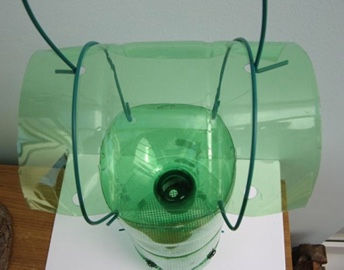
Sherborne Beekeepers' Association
Asian Hornet
Vespa velutina nigrothorax, the yellow-legged hornet (a.k.a the Asian hornet) was first found in the UK in 2016. The first European incursion of this hornet was reported in France in 2004. The Asian hornet has since spread around 80-100 km per year, invading Spain, Portugal, Italy, Germany and Belgium. Adult hornets are voracious predators of honey bees and other beneficial insects, resulting in colony losses in France. Since 2016, there have been a number of nests discovered and destroyed in the South of England. Whilst this appears to be good news, the ability of the Asian hornet to spread rapidly means that we must remain vigilant and aware of any possible activity across a wide area and with spring fast approaching, there is an opportunity for us all to monitor and trap any potential foundress queens.
The Asian Hornet is a highly aggressive predator which poses a significant threat to honey bees and other pollinators in the UK. Numbers of the destructive insect have risen rapidly in 2023 and by mid August more have been detected in the UK this year than in the previous seven years combined.
Just one Asian Hornet can hunt down and eat 30 - 50 honey bees a day and their habit of hawking (hovering) outside the hive stops the bees from collecting nectar and pollen to feed themselves.
In spring, surviving V. velutina queens begin a small primary nest, often in a sheltered location such as in the eaves of a roof or in a garden shed. Here they raise the first clutch of workers who take over the queen’s foraging duties. At this stage the nest grows quickly, and the hornets often move to establish a secondary nest where there is more space to expand. These nests can become very large, and are often located high up in the tree canopy, close to a food source such as apiaries, (see images on BeeBase for further details).
From late September to October, the mature nest produces males and then virgin queens, which mate and disperse. However, the beginning of this stage of nest reproduction can vary, depending on climatic conditions. In France, a single mature nest produces on average 11 foundress queens after taking into account overwintering mortality of the potentially hundreds of queens that first disperse in autumn.
A consortium of scientists from the NBU and the Universities of Warwick and Newcastle have used data on the spread of the Asian hornet in France to develop a mathematical model that can estimate the hornet spread in the UK.
There is a helpful Asian hornet identification sheet and poster. Contact details of Committee Members who are able to help identify and report these insects can be found here.
Should you find a suspect Asian hornet or nest, please contact the Non Native Species Secretariat immediately using the Asian Hornet Watch app or via their alert email address: alertnonnative@ceh.ac.uk giving as much information as possible. Please include details such as your name, the location where the hornet was found and if possible an image of the specimen. Please do not put yourself in any danger of getting stung when trying to take a photo. Even if you are unsure of whether it is an Asian hornet, send it in anyway – it’s better to be safe than sorry.
Below you will find a huge amount of information on the Hornet, but all beekeepers are encouraged to watch the STOPVESPA video!








